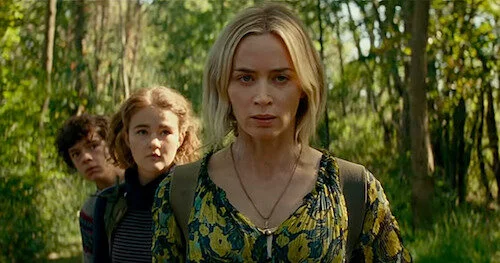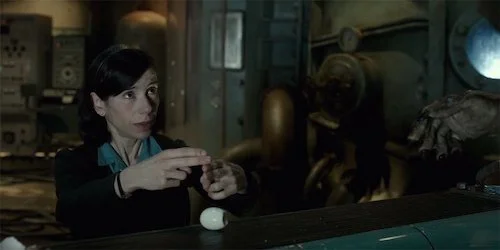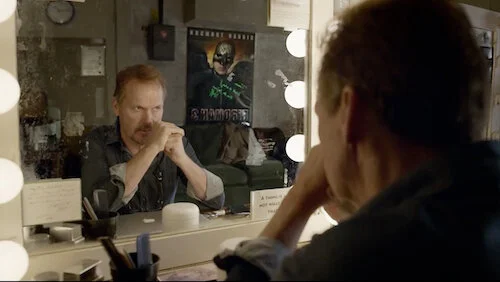Modern Cinema's Reversion to Old Ways
With A Quiet Place 2 coming out soon, I have the chance to revisit a thought I’ve had since the first film came out. Previous sites I wrote for didn’t quite care for this. Well, I can call my own shots now. Obviously, A Quiet Place toyed with the use of empty soundscapes heavily, because of the nature of the monsters in the film (the ones that work via sound alone, so everyone has to be as silent as possible to not give away their locations). So, I’ve had a few years to sit on this observation: newer films, intentionally or not, are reversions to the earliest days of narrative cinema. It’s as if we are coming around full circle in a completely new way; like a time traveler revisiting a moment of their past with new information, technology, and visions.
I’ll explain. Films like A Quiet Place (and, clearly, 2) are reliant on their visual storytelling, acting almost like silent films of the modern age. Now, there is a major difference between films from the silent era, and films that are simply silent. Films from the earliest days of cinema are of their own ilk, through pacing, tropes, fascinations, and much more; they’re even trapped within their own technological capabilities (less frames per second, more frigid camerawork, and, of course, the lack of recorded sound for the most part). These unique modern examples are very much from our time technologically; their hearts feel like they’re influenced by the ways of the old, though.
The Shape of Water
With the sonic assault on our senses that films have strived to be for decades (with some gimmicky films going past just sight and sound), it’s interesting to find films that reference the days of old. A Quiet Place features performers speaking entirely by facial expressions or sign language; the subtitles act like title cards for those of us that don’t understand American (or other forms of ) sign language, without breaking the visual story of course. Sound is still being used, but to set the viewer in an environment, much like films at the turning point of the dawn of “talkies” did: Sunrise: A Song of Two Humans famously had recorded sound for particular parts of the film, to immerse viewers in specific situations (as did some other films). In The Shape of Water, Guillermo del Toro was clearly trying to mix different eras of cinema together: the Golden Age “monster” meeting current filmmaking, and the moments that rely on visual storytelling when Elisa is on screen. Was John Krasinski trying to reference the silent era? Who knows. Maybe. Maybe not.
Regardless, current cinema has shown signs of the medium’s earliest iterations for some time now. There are blatant homages (I have to bring up The Artist here), but the less obvious examples are what make this feel like an organic process, as opposed to a project driven by nostalgia or fondness. This also includes the constant test to make films with one long take (or as few shots as possible). Cuts stitched together static shots in the early days, so a visual story could be told; before, you were basically looking at one perspective that would drone on for some scenes (including characters walking off the side, as if they were on a stage; even “corpses” of dead characters somehow rolled off the side if they needed to in some films). Dynamic editing turned a necessity into an art form. Now, we’re at a place in cinematic history where many filmmakers are trying to magically erase these cuts, although we’re far from the first generation to attempt this (a key example, Alfred Hitchcock’s Rope, came out in 1948).
Birdman.
Of course, you have many films that try to evoke an older point in cinematic history. The Lighthouse. The Love Witch. The Grand Budapest Hotel. Many early films tried to leap forwards, and yet numerous filmmakers today love to hop back in time. Even without doing this deliberately, cinema is getting to a point where the graces of the earliest films are being brought out of the medium in new ways. I’m not suggesting that film will become what it once was. Rather, I feel as though this over-one-hundred-year-old medium has been explored through and through, to the point of self revitalization. By trying to drift away from the familiar now, part of that journey is heading towards unexplored territory. The other portion of this adventure is to revisit old, abandoned lands. It’s an interesting phenomenon that I believe will only become more blatant, and even more fascinating, as time goes on. This is only the beginning of cinema’s transmogrification with its future and past selves.
Andreas Babiolakis has a Masters degree in Film and Photography Preservation and Collections management from Ryerson University, as well as a Bachelors degree in Cinema Studies from York University. His favourite times of year are the Criterion Collection flash sales and the annual Toronto International Film Festival.




